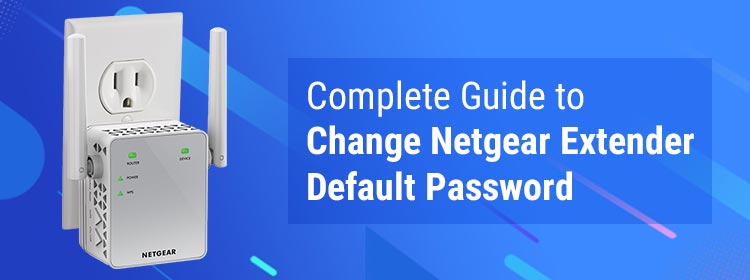The security of your Netgear wireless range extender is quite important. Although Netgear provides a default password for its extenders to keep unauthorized users at bay, however, using the Netgear extender default password for a long time can also put your WiFi network in danger. Anyone who is aware of the model number of your device can easily crack the default password, access the network, and steal your personal information.
To prevent that from happening, it is recommended that you change the default password of your wireless device. In case you are wondering how to do that, this post is written for you. Walk through the step-by-step guidelines mentioned below and learn how to change the password of your device.
How to Change Netgear Extender Default Password?
- Plug your Netgear WiFi range extender into a wall outlet. Make sure that it is in good condition.
- Power up your wireless device and let the power LED become green.
- Now, create a connection between your Netgear extender and your home router.
- You can connect your devices wirelessly or using an Ethernet cable.
- As soon as a strong connection between your devices has been established, switch on your computer.
- Launch an internet browser. No matter what internet browser you use, make sure that it is updated.
- In the address bar of the internet browser, type mywifiext local, and press Enter.
- The Netgear extender login page will appear.
- Fill the default username and password of your device into their respective fields.
- Click Log In.
- You will get welcomed by the Netgear Genie smart setup wizard.
- Head over to the Settings menu.
- Click Wireless Settings.
- Under the Password (Network Key) field, enter the new password you want your Netgear range extender to have.
- Click the Apply option.
- In some time, the changes you’ve made to your device will get saved.
By following these steps, you’ll easily be able to change the Netgear extender default password.
Note: If your WiFi-enabled device disconnects from the network, then it is advised that you see the available wireless network options again and enter the new WiFi password you gave to your Netgear extender.
If you get stuck at any point while trying to change the Netgear extender default password, either refer to the troubleshooting tips mentioned below or get in touch with our well-versed technical experts.
Can’t Change Netgear Extender Default Password?
- Ensure that your WiFi-enabled device is connected to the extender’s network, i.e. Netgear_ext.
- If the power LED on your Netgear extender doesn’t turn green, then reboot your device. Once done, try to change its password from scratch.
- Make sure that your wireless range extender is receiving an adequate and fluctuation-free power supply from the wall socket.
- Avoid connecting your Netgear extender and your home router using a worn-out or damaged Ethernet cable.
- An outdated firmware is known to cause various technical issues. Therefore, keep the firmware of your Netgear wireless range extender updated to the latest version.
- If you are unable to access mywifiext local, consider using the 192.168.1.250 default IP address to log in to your WiFi device.
Once you are done following these troubleshooting tips, try to change the Netgear extender default password.
Final Words
Changing the Netgear extender default password isn’t rocket science. However, many users get stuck during the process. To ensure that you don’t have the same fate, follow the steps mentioned in this post and secure your wireless network from unauthorized access.
For any further doubts or queries, feel free to reach out to our experts at any hour of the day.
